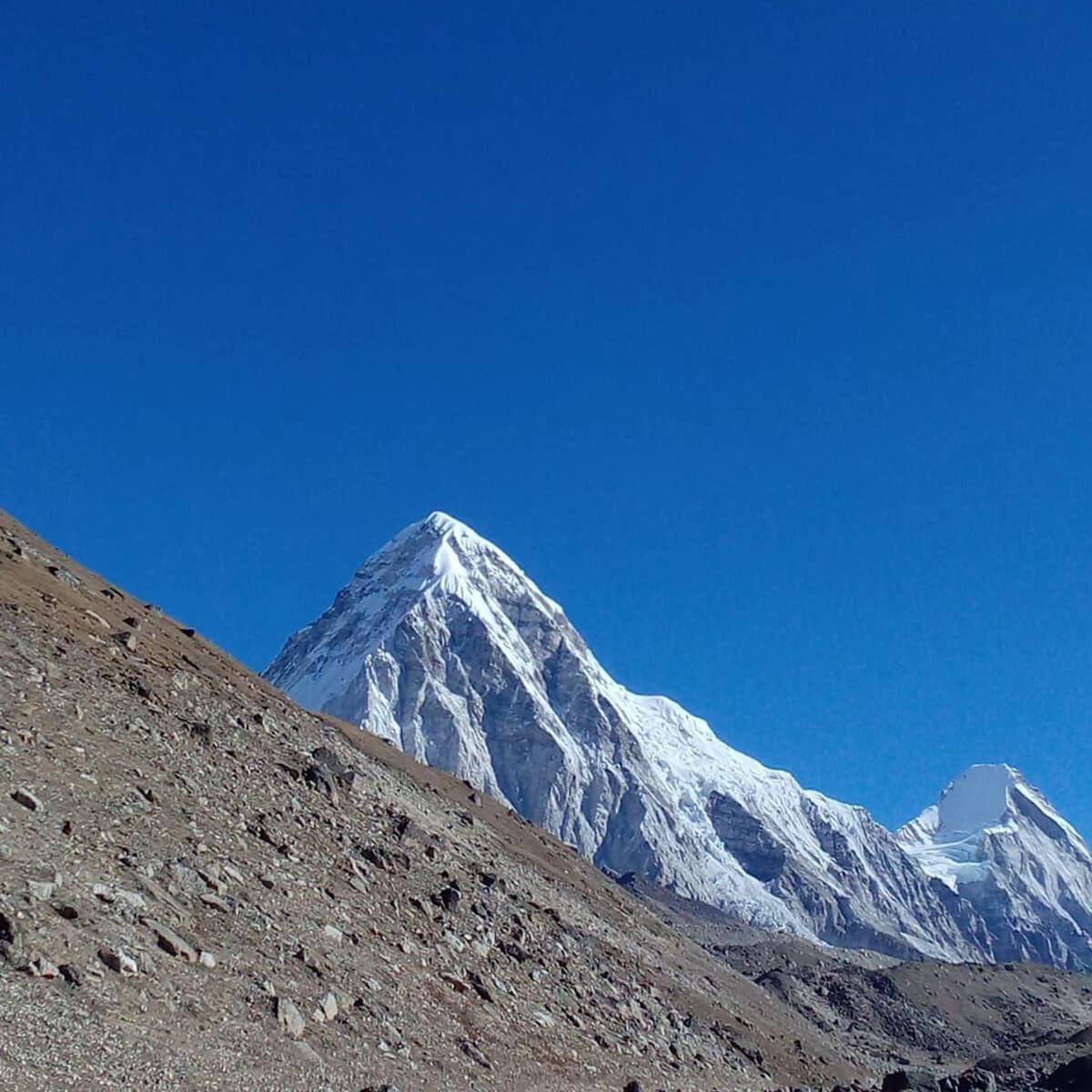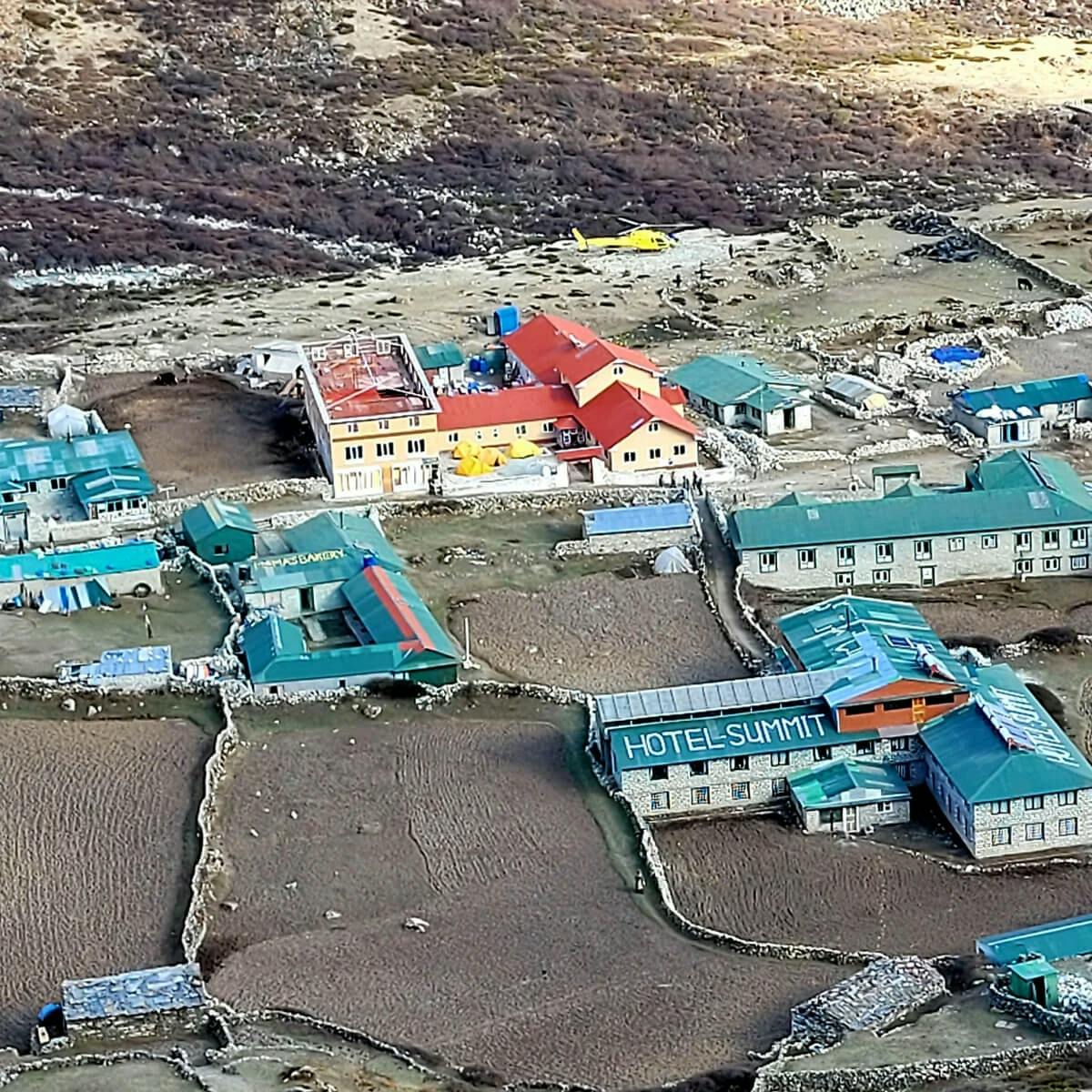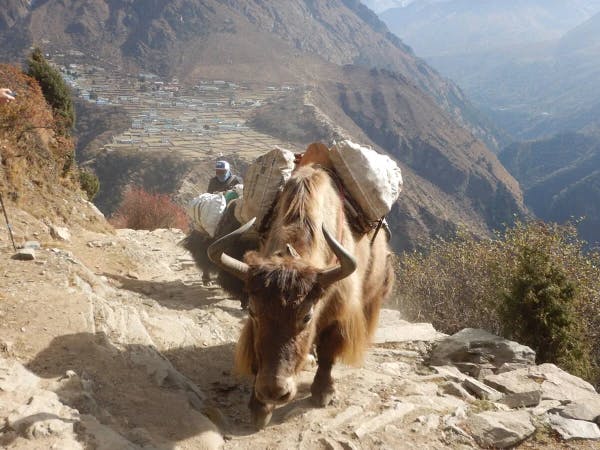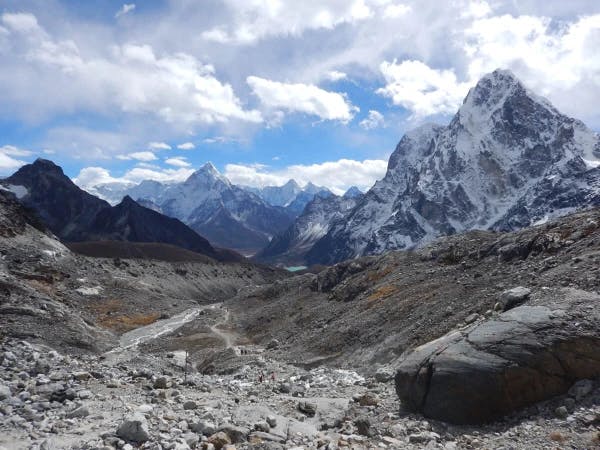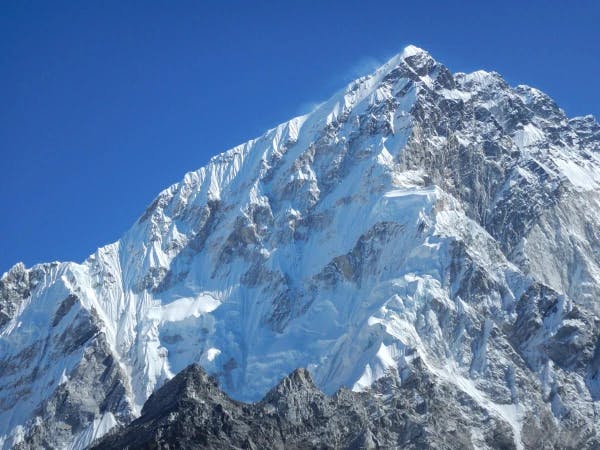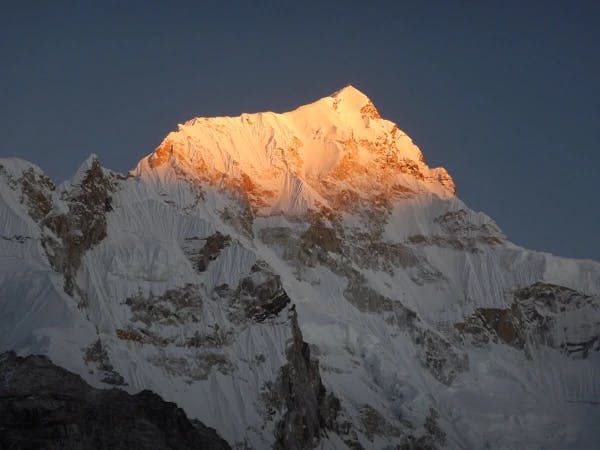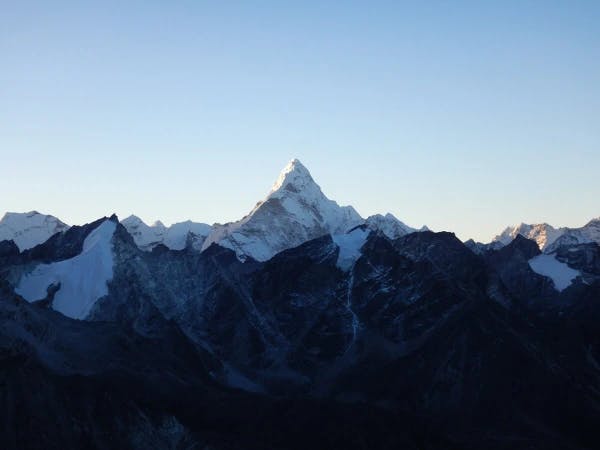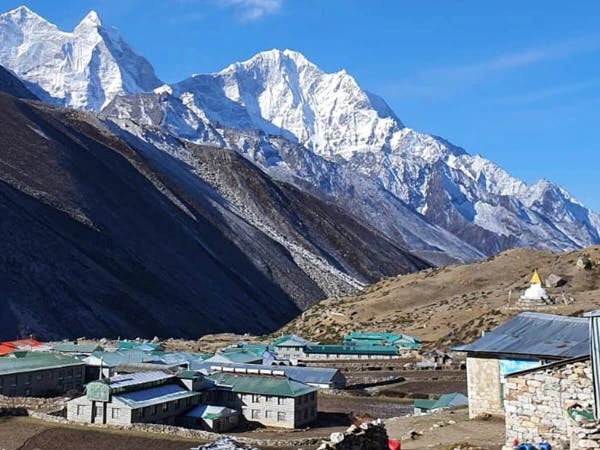The Everest Base Camp Trek is one of the most well-trodden and popular Himalayan journeys in the world. It takes you into the heart of the Nepalese Himalayas at the foothills of the tallest mountain on the planet, Mt. Everest (8,848m). Widely popular for the breathtakingly varying landscapes usually dominated by towering snow-capped peaks, lovely traditional valleys, and typical mountain settlements of the Sherpa people, trekking to the Everest Base Camp stands second to none as the top-notch hiking destination in Nepal.
Elevated at an altitude of 5,364 m (17,598 ft) above sea level, the journey to the South Base Camp of Everest in Nepal is going to be an adventure of a lifetime to take in all the serenity of the top of the world from as close as possible without having to set out for another high Himalayan expedition to summit the peak itself, which can be fatal at times. Hence, the Everest Base Camp Trekking is a well-paired extraordinary, and challenging experience with the major highlights of the Everest region, equivalent to conquering the Everest mountain giant itself.
Typically commencing from a small Himalayan town, Lukla, serving as the gateway to the Everest Trekking region, with a small airport elevated at one of the highest altitudes in Nepal (2,845 m/9,334 ft), the Everest Base Camp expedition is no wonder an epic alpine rambling that traverses through various cultural and natural landmarks such as Namche, Tengboche, Dingboche, and Gorak Shep before arriving at the Everest Base Camp itself and the highest elevation of overall jaunting, Kala Patthar.
As the name suggests, this upperland voyage to the Everest Base Camp is not going to be easy. It includes the crossing of several suspension bridges over the roaring rivers, sharp ascents, and descents through rugged terrain and trails, which, however, can be significantly more facilitated than other trekking spots in Nepal, such as the Manaslu Circuit voyage, Langtang Valley Touring, Expedition to Tsum Valley, and others.
Nonetheless, your tour of Mt. Everest Base Camp is an iconic once-in-a-lifetime journey offering precious memories of adventure, cultural immersion, and more than dozens of top-notch Himalayan peaks in the remote part of the Nepalese Himalayas, giving you the correct incentives to connect to the true essence of nature and its people. If you are looking for one such adventure to take yourself on in the holidays of 2024 and 2025, contact us now for a notable itinerary and budget considerations to trek the Everest Base Camp.
Highlights
- Enjoy the captivating aerial views on the flight to and from Lukla.
- Experience the first-hand wilderness of Sagarmatha National Park.
- Unwind yourself in the trade and cultural capital of the Everest region, Namche Bazaar.
- Unique lookouts at the Everest mountain range from various highly elevated vantage points such as Hotel Everest View, Kala Patthar, and Gokyo Peak.
- Get to relish the serene ambiance of the Khumbu glacier and icefall to the fullest.
- The heavenly sight of Mt. Everest, Ama Dablam, Lhotse, Nuptse, Thamserku, Cho Oyu, and many others
- Get blessings at some of the most revered ancient monasteries, such as Tengboche, Dingboche, and others.
- Embrace the enriching Sherpa culture of the Khumbu region.
What makes trekking to the Everest Base Camp special?
The Everest Base Camp Trek, also known as the EBC hike, is one of the finest trekking packages in the world. It circumnavigates the tallest mountain on the globe, Mt.Everest, all the way through the capital city of Nepal, Kathmandu, to the Sherpa capital of Sherpa, Namche Bazaar, in the Everest region, eventually leading you to the south lap of Everest in Nepal at an altitude of 5,364 m/17,598 ft.
The comprehensive journey is an adventurous alpine rambling guaranteeing equivalent rewards of natural thrills, cultural immersion, eccentric high-altitude landscapes, and snow-capped mountains. Expect the unexpected special adventure boasting of:
The adventurer's paradise, Mt. Everest (8,848m)
Mt. Everest, locally known as Sagarmatha and Chomolungma in Tibet, is the largest peak on the earth, measuring 8,848 m. It is undoubtedly a paradise for every outdoor adventure and activity lover. It promises a journey of self-discovery, personal triumph, and spiritual cleansing, not only on summiting this gigantic mountain range but also on making it to its base camp.
Every year, it caters to the interests of thousands of trekkers, climbers, and expeditors alike across the world, including some of the humbling moments where one must push themselves beyond their limits, demanding a good level of mental and physical conditioning. The allure of standing at the foot of the planet’s largest mountain is a powerful draw that still holds mystery and mystique in the year, followed by the tale of Yeti, who is believed to reside somewhere around Mt. Everest, adding much to observe and discover during the Everest Base Camp Trek.
Therefore, Mt. Everest is not just a peak; it is a legend in itself, a pinnacle of achievement in the world of mountaineering, trekking, hiking, or any other form of adventure you wish to relish, evoking the true sense of awe and wonder to mark a victory over a convenient method of at least being in its lap at the base camp, calling adventurous spirits all around the universe.
The mesmerizing Sherpa culture
There is zero doubt that the Everest region inhabits a wide ethnic community in Nepal encountered on the way to the Everest Base Camp, which is basically dominated by the Sherpa people, celebrated worldwide for their mountaineering skills and hospitality, the majority of whom hold a strong faith in the Tibetan Vajrayana Buddha.
It adds much to your cultural engrossment, while the comprehensive trekking to the Everest Base Camp offers you a glimpse into the harmonious and resilient mountain community and their way of life, still deeply rooted in agriculture and livestock.
On keeping everyday interaction with these locals from the Himalayas, they would be happy to give you a deeper insight into their everyday lives and the region's hidden mysteries. Our local Sherpa guide can help you establish a smooth connection between trekkers and locals, providing a deep and valued meaning to the trekking experience at Everest Base Camp.
The wonderland of the Himalayas, the Everest region
Throughout this adrenaline-rushing adventurous trek to the Everest Base Camp, you will be in the heavenly presence of snowy giants that keep you motivated to challenge the outstanding heights of the Himalayas, featuring some of the greatest rugged trails with sharp ascents and descents, such as Mt. Pumori, Holla, Ama Dablam, Lhotse, Nuptse, and Khumbutse, including the top of the planet, Mt. Everest.
As an ideal destination that you can commence any time of the year you prefer, the Everest region hence is an open challenge to test yourselves both physically and mentally and let yourself completely free venturing around the goose-bumping Khumbu Icefall, sparkling waters of glacial lakes, and several cascading waterfalls all amidst the majestic snow-capped mountain ranges of the Everest, giving you an access to different kinds of adventure sports in the Himalayas such as mountaineering, rock climbing, mountain biking, and others.
Here’s what you might like about preferring the scenic summit to the peak in the Everest region:
If you are more fond of unwinding yourself in the turquoise lakes of the Everest Himalayas while exploring the Everest Base Camp by crossing one of the commendable passes, then the 16-day Gokyo Cho La Everest Base Camp Trek is just made for you, offering an incredible amalgamation of breathtaking natural and cultural gems in eastern Nepal.
The gratifying hike to the Everest Base Camp and Kala Patthar
Of course, the Everest Base Camp and Kala Patthar are the major highlights of the overall alpine jaunting to the Everest Base Camp to seize the memories that will stay with you, ever filling you with the sense of adequate, where reaching the foot of the world’s highest mountain surrounded by sky-towering peaks and massive Khumbu icefall provides you with the most intimate embracement of the Everest range itself, while Kala Patthar grants you an exclusive, most closet look out at the peak.
The Everest Base Camp is the starting point to summit the peak itself to meet brave climbers worth the extra effort to be in a crown jewel-like tranquil setting far away from the hustle and bustle of modern life, while the side trek to the nearby viewpoint on the next day, Kala Patthar offers one of the most spectacular panoramic views, especially during sunrise and sunset, crafting the spell-binding magical moment to delve into during the trekking to the Everest Base Camp.
The journey to rejuvenate oneself spiritually
For the spiritual guidance seeker, the pristine beauty of the Everest region upon embarking on the Everest Base Camp expedition is just the right ambiance for meditation and self-reflection on encountering several highly revered sacred sites such as Buddhist monasteries, stupas, mani walls, and prayer flags, giving rise to the sacred sanctuary with a moment of stillness that might have been long lost from numerous trek destinations due to rapid urbanization.
Often related to the divine being, the mountain peaks seen en route to the Everest Base Camp allow you to reconnect with the natural world, aiding you in finding solace in its serenity, while the locals invite you to participate in several festivals, celebrations, rites, and rituals to find connection with the region’s divinity to tune your innermost thoughts and desires, serving as the spiritual pilgrimage.
The 14-day trek itinerary and route to the Everest Base Camp
The 14-day itinerary for an adventurous hike to the Everest Base Camp begins as soon as you step into the capital city of Nepal, Kathmandu, to board a flight to the starting point of the trek, Lukla the very next day spend a night at the local tea house or lodge in Phakding and then immediately goes to Namche in the following days.
On relishing a day of acclimatization in Namche, the 14-day Everest Base Camp Trekking route takes you to several cultural, religious, and natural landmarks of the region: Tengboche, Dingboche, Loubcuhe, and Gorak Shep, ascending to a greater height and closer proximity to Mt. Everest (8,848m) at its base camp at an altitude of 5,634m.
However, it is not the highest altitude of this once-in-a-lifetime journey to the upper land of the Everest region, which is the Kala Patthar, translating to ‘Black Stone’ in English, with an unmatchable look out at the surrounding snow-capped peaks, including Mt. Everest, especially in the morning to capture the changing colors of the sky in stark contrast to the whitewashed mountain ranges.
Nonetheless, a successful ascent to Kala Patthar initiates a retracing of the route back to Kathmandu, which at first descends to Pheriche, directly to the Namche, and lastly to Lukla to fly over to the valley one more time and head home country, collecting the memories of a lifetime in the Himalayas warmed by the genuine hospitality of the Sherpas.
This 14-day itinerary and route to the Everest Base Camp traditionally follows well-versed and established trails, allowing ample acclimatization and discovery of the Khumbu region, its unique cultural and natural gem; hence, it is the best one among multiple itineraries to choose from offered by Ammonite Adventure and Treks.
The Everest Base Camp Trek Cost
The overall cost to go on a thrilling high Himalayan expedition to the foot in the region dominated by the largest mountain giant in the world, Everest Base Camp Trek, can vary greatly based on the duration of the trek, season, level of comfort you are seeking, and whether you are hopeful for a more secluded experience independently or a guided tour organized by a 100% trustworthy travel, tour, and trek operator such as Ammonite Adventure and Treks.
To sum up, the trekking cost to the Everest Base Camp can generally range from USD 1,200 to anywhere from USD 4,000, which usually covers the expenses of all the logistics of this adventurous hiking, including the essential permits, meals, accommodation, guides, porter fees, personal travel insurance, and necessary trekking equipment and gear.


